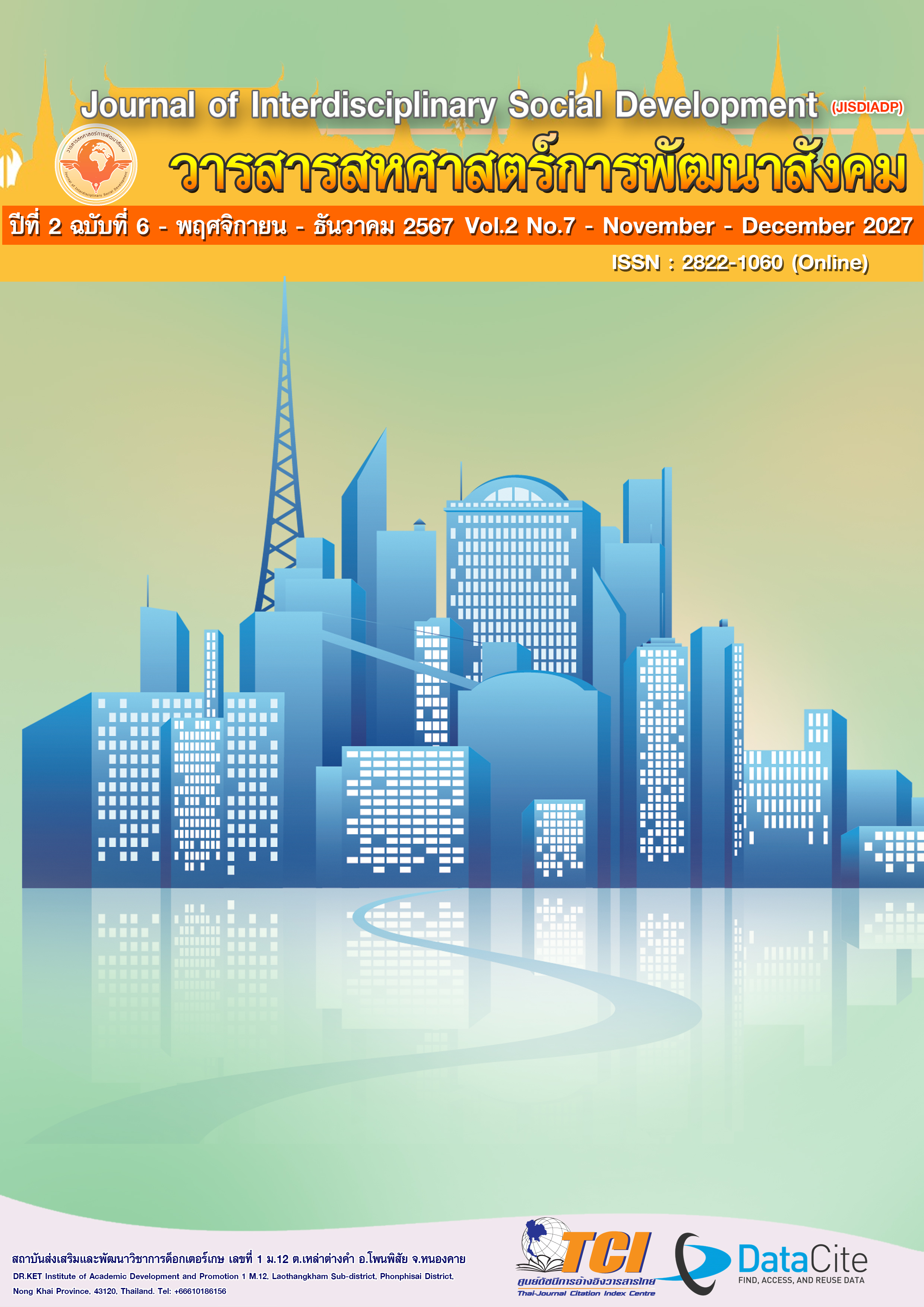มือที่มองไม่เห็นของผู้กุมอำนาจการเมืองไทย
Main Article Content
บทคัดย่อ
ต้นกำเนิดของ “มือที่มองไม่เห็น” ในทางการเมืองของไทยนั้นสืบย้อนไปถึงโครงสร้างอำนาจทางประวัติศาสตร์ของประเทศ โดยเฉพาะกองทัพ ซึ่งมีอิทธิพลอย่างมากนับตั้งแต่การปฏิวัติในปี 2475 ที่ยุติการปกครองแบบสมบูรณาญาสิทธิราชย์ มือที่มองไม่เห็นนี้แสดงถึงพลังที่มองไม่เห็นแต่ทรงพลัง เช่น กองทัพ กลุ่มชนชั้นนำชนชั้นสูงในระบบราชการ และกลุ่มนักธุรกิจที่มีอิทธิพลซึ่งกำหนดผลลัพธ์ทางการเมืองในขณะที่ดำเนินการอยู่เบื้องหลัง ความสำคัญของมือที่มองไม่เห็นอยู่ที่การรักษาเสถียรภาพและการควบคุมของชนชั้นสูง ซึ่งมักจะต้องแลกมาด้วยการปฏิรูปประชาธิปไตยและความโปร่งใสทางการเมือง
“มือที่มองไม่เห็น” ของผู้กุมอำนาจทางการเมืองของไทย หมายถึง อิทธิพลที่มองไม่เห็นแต่ทรงพลังของ ทหาร ข้าราชการชั้นสูง ผู้ประกอบการ และเครือข่ายอุปถัมภ์ที่มีอิทธิพลต่อวิถีการเมืองของประเทศ มือที่มองไม่เห็นนี้สามารถทำหน้าที่เป็นพลังในการสร้างเสถียรภาพได้ แต่ก็เป็นอุปสรรคต่อการปฏิรูปประชาธิปไตยได้ โดยเฉพาะอย่างยิ่งเมื่อขบวนการเรียกร้องประชาธิปไตยได้รับแรงผลักดันและผลักดันให้เกิดการเปลี่ยนแปลงในระบบการเมือง
Article Details

This work is licensed under a Creative Commons Attribution-NonCommercial-NoDerivatives 4.0 International License.
References
Aphornsuvan, T. (2009). Thailand: A short history of politics and the military. SEAP Publications.
Callahan, W. A. (2005). The discourse of vote buying and political reform in Thailand. Pacific Affairs, 78(1), 95-113.
Chambers, P. (2013). Khaki capitalism and the economic clout of the Thai military. Asian Journal of Political Science, 21(2), 156-178.
Chambers, P., & Waitoolkiat, N. (2016). Khaki capital: The political economy of the military in Southeast Asia. NIAS Press.
Connors, M. K. (2007). Democracy and national identity in Thailand. NIAS Press.
Dressel, B. (2010). Judicialization of politics or politicization of the judiciary? Considerations from recent events in Thailand. The Pacific Review, 23(5), 671-691.
Giles, J. (2020). Protests in Thailand: Challenging the monarchy and military. Asian Affairs, 51(3), 445-459.
Hewison, K. (2010). Thailand’s conservative democratization. The Pacific Review, 23(2), 211-231. https://doi.org/10.1080/09512741003624415
McCargo, D. (2005). Network monarchy and legitimacy crises in Thailand. The Pacific Review, 18(4), 499-519. https://doi.org/10.1080/09512740500338937
McCargo, D. (2014). The media and politics in Thailand. In R. J. Harrison & P. A. Jackson (Eds.), The ambiguous allure of the west: Traces of the colonial in Thailand (pp. 191-208). Hong Kong University Press.
McCargo, D. (2019). Thailand’s monarchy and the military: The relationship between legitimacy and power. Journal of Contemporary Asia, 49(1), 5-27.
McCargo, D. (2020). Fighting for virtue: Justice and politics in Thailand. Cornell University Press.
McCargo, D., & Ukrist, P. (2005). The Thaksinization of Thailand. NIAS Press.
Nielsen, K. B. (2016). The political elite and technocracy in Thailand. Journal of Contemporary Southeast Asia, 38(2), 194-215.
Ockey, J. (2004). Making democracy: Leadership, class, gender, and political participation in Thailand. University of Hawaii Press.
Pavin, C. (2020). The future of Thai democracy: Protests and the role of youth. Journal of Southeast Asian Studies, 51(4), 679-691.
Pavin, C. (2020). The rise of youth protests in Thailand: Unprecedented demands for reform. Asian Affairs, 51(4), 623-643. https://doi.org/10.1080/03068374.2020.1846214
Phongpaichit, P., & Baker, C. (1997). Power in transition: Thailand in the 1990s. SEAP Publications.
Phongpaichit, P., & Baker, C. (2004). Thaksin: The business of politics in Thailand. NIAS Press.
Phongpaichit, P., & Baker, C. (2009). Thaksin: Second edition. Silkworm Books.
Prachatai. (2015). Thai junta imposes new media controls to curb dissent. Prachatai English. https://prachatai.com/english/node/4975
Streckfuss, D. (2011). Truth on trial in Thailand: Defamation, treason, and lese-majesté. Routledge.
Streckfuss, D. (2020). Lese-Majeste and the changing role of the monarchy in Thailand. Southeast Asian Affairs, 47(1), 103-122.

